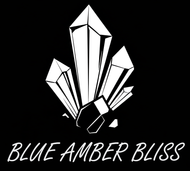Ever wondered why two pieces of blue amber can look and price so differently? This expert-level guide breaks down the geology, colour chemistry, inclusions, and ethical realities that separate Indonesian (Sumatra) counterpart from its Dominican blue amber—so you can buy, collect, or carve with total clarity.
1 | Geographic Snapshot
| Attribute | Indonesian (Sumatra) | Dominican Republic |
|---|---|---|
| Coordinates | 1°–3° S / 102°–104° E | 19°–19.5° N / 70°–71° W |
| Key districts | Jambi, Bengkulu | La Cumbre, Los Cacaos |
| Mining style | Artisanal creek-bed & shallow pit | Hand-dug tunnels in lignite seams |
| Climate | Equatorial rainforest, heavy monsoon | Tropical-seasonal, drier winters |
Why it matters: Latitude and rainfall shape resin production, burial speed, and later fluorescence intensity.
2 | Formation & Host Rocks
2.1 Resin Source Trees
-
Sumatra: Mix of Dipterocarpaceae and Hymenaea relatives—resin rich in phenolics (key for intense blue glow).
-
Dominican: Almost exclusively Hymenaea protera—lower phenolic load, lighter body colour.
2.2 Burial Environment
-
Sumatra
-
Deltaic mud-flats in the Talang Akar Formation.
-
Frequent volcanic ash blankets create sub-oxic pockets that lock in polycyclic aromatic hydrocarbons (PAHs).
-
-
Dominican Republic
-
Peat-rich lignite swamps in the La Toca Formation.
-
Less volcanic ash; slower burial, smaller nodules.
-
2.3 Temperature Window
Both deposits stayed below 80 °C, preserving PAHs—but Sumatra samples record slightly higher peak temps (~60 °C) that help polymerise resin into crack-resistant blocks.
3 | Colour & Fluorescence Face-Off
| Test light | Sumatra blue amber | Dominican blue amber |
|---|---|---|
| Daylight | Smoky-brown body with visible petrol-blue veil | Honey- to cognac-yellow; blue rarely seen |
| White LED torch | Cobalt flash obvious | Weak petrol tint |
| 365 nm UV | Neon cobalt, often uniform | Bright blue but only in spotlit zones |
| Thick-slice shift | Usambara green-teal emerges >10 mm | Subtle; mostly stays blue |
Verdict: Indonesian material wins for daylight visibility—ideal for jewellery that needs to impress without nightclub lighting.
4 | Typical Inclusions
-
Sumatra
-
Gas-bubble “firefly trails”
-
Charcoal flakes from Miocene wildfires
-
Rare but dramatic insects—dark matrix frames them like ink drawings
-
-
Dominican
-
Abundant, diverse insects (ants, termites, arachnids). Please note that it is not that rare to see insects in Dominican Amber.
-
Botanical inclusions: leaves, flower petals
-
“Sun-spangle” stress discs (glitter effect)
-
Collectors seeking museum-quality insect fossils still gravitate to Dominican sources, but the sheer contrast of an insect inside smoky Sumatra amber can command equal premiums.
5 | Nodule Size & Workability
| Metric | Sumatra | Dominican |
|---|---|---|
| Common rough range | 10 g – 1 kg + | 2 g – 300 g |
| Fracture tendency | Low; thick rind | Moderate-high; internal stress |
| Carving potential | Large sculptures, cabochons, bead strands | Mostly cabochons, small beads |
Carvers and lapidaries praise Indonesian blocks for clean saw cuts and fewer shatter lines, enabling intricate figurines (Buddhas, koi fish, dragons) impossible with smaller Dominican pebbles.
6 | Market Prices & Availability
6.1 2025 Indicative Retail Prices (USD / gram)
| Quality | Sumatra | Dominican |
|---|---|---|
| Museum (flawless, strong daylight glow) | $80–120 | $70–100 |
| Fine (minor hairlines) | $45–70 | $35–55 |
| Commercial (visible cracks) | $18–30 | $12–25 |
Supply chain note: Monsoon shutdowns in Indonesia often spike Sumatra prices 20 % YoY. Dominican supply is steadier but constrained by tunnel safety rules.
7 | Environmental & Ethical Considerations
| Factor | Sumatra | Dominican |
|---|---|---|
| Land disturbance | Creek-bed hand digging; minimal heavy gear | Narrow shafts disturb 0.1 ha per mine |
| Deforestation risk | Low (jungle access roads) | Low (mines in settled farmland) |
| Miner safety | Flood & landslide hazards | Tunnel collapse hazards |
| Export permits | Tightened in 2024; legal channels only | Long-standing permit system |
8 | Fast FAQ
| Q | A |
|---|---|
| Which blue amber is rarer? | Sumatra rough in museum quality is scarcer, but smaller Dominican nodules are more plentiful overall. |
| Does Dominican amber ever glow in daylight? | Rarely; most needs UV to show colour. |
| Are insects in Sumatra amber less valuable? | No—complete insects in Sumatra commands higher premiums due to contrast and rarity. |
| Can I mix both ambers in one jewellery piece? | Yes; designers often pair Dominican yellow cabs with Sumatra blue centres for contrast. |
9 | Key Takeaways
-
Colour punch: Indonesian blue amber offers cobalt daylight glow; Dominican requires UV.
-
Nodule size: Sumatra blocks enable large carvings; Dominican is cabochon-friendly.
-
Fossil content: Dominican amber hosts more diverse inclusions, though Sumatra insects can be more striking.
-
Ethics & environment: Both are artisanal, but verify permits and safe practices.
-
Investment angle: Daylight-glowing Sumatra pieces and perfect Dominican insect-cabs sit at the top of the value pyramid.
Bottom line: In the Dominican vs Indonesian blue amber debate, your choice hinges on use-case and aesthetics. Need a statement carving or a glow-without-UV pendant? Go Indonesian. Chasing textbook-grade insect fossils or warm cognac body colour? Dominican. Either way, armed with the insights above, you’ll navigate the niche market with the confidence of a seasoned gemologist.


